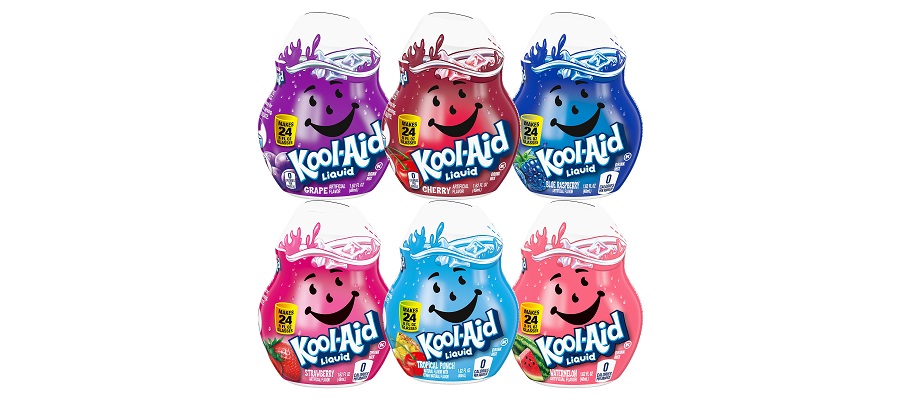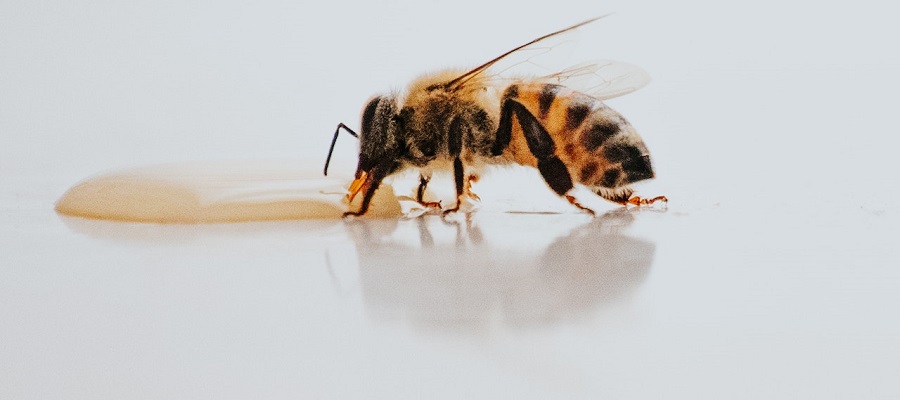Kool-Aid is a brand of flavored drink mix that is available in a variety of flavors. It is made by Kraft Heinz and is known for its bright colors and sweet taste. The powder is typically mixed with water and sugar to make a sweet, flavored drink. Kool-Aid has been around since the 1920s and is a popular drink, particularly among children. In recent years, the phrase "drinking the Kool-Aid" has become a popular idiomatic expression, meaning to blindly follow a leader or ideology without question. This phrase originated from the 1978 Jonestown massacre, where over 900 members of the Peoples Temple cult died, many from drinking poisoned Flavor-Aid (similar to Kool-Aid) under the instruction of their leader Jim Jones.
What are the main ingredients in Kool-Aid?
Kool-Aid is a brand of flavored drink mix that is known for its bright colors and sweet taste. The main ingredients in Kool-Aid are sugar, artificial colors, and artificial flavors. The specific ingredients can vary depending on the flavor of Kool-Aid, but generally, it is made of sugar, citric acid, artificial flavor, and artificial colors (such as Red 40, Blue 1, Yellow 5, Yellow 6). It also contains malic acid, ascorbic acid (vitamin C), and calcium phosphate as a dietary supplement.
Sugar is the main ingredient in Kool-Aid, which gives the drink its sweet taste. The amount of sugar in Kool-Aid can vary depending on the flavor, but it is generally high. This high sugar content is one of the reasons why Kool-Aid is not considered a healthy drink option.
Artificial colors are used in Kool-Aid to give the drink its bright, vibrant colors. These colors are derived from synthetic sources and are not found naturally in food. Some studies have raised concerns about the potential health risks of consuming artificial colors, such as an increased risk of cancer, hyperactivity in children, and allergic reactions.
Artificial flavors are also used in Kool-Aid to give the drink its unique taste. These flavors are created in a laboratory and are not found naturally in food. Some people may be sensitive to artificial flavors and may experience allergic reactions after consuming them.
In addition, Kool-Aid contains malic acid, ascorbic acid (vitamin C), and calcium phosphate as a dietary supplement, which is added to improve the taste and to make it more nutritious.
It is important to keep in mind that despite being a popular drink among children, Kool-Aid is not a healthy beverage choice due to high sugar and artificial ingredients. It can be consumed occasionally as a treat, but it's not recommended to consume it regularly.
How is Kool-Aid typically consumed?
Kool-Aid is typically consumed as a sweet, flavored drink. The powder is mixed with water and sugar to create the drink. The powder is usually dissolved in a small amount of hot water before being added to a larger amount of cold water. The drink is then chilled and served over ice. The exact amount of powder and sugar used can vary depending on personal preference, but it is typically mixed according to the package instructions. Some people also like to add additional ingredients, such as fruit or ice cream, to create a more complex flavor. Kool-Aid can also be used as a food coloring and flavoring in some desserts such as Jell-O, cookies, cakes etc.
What are some popular flavors of Kool-Aid?
Some popular flavors of Kool-Aid include:
- Cherry
- Grape
- Tropical Punch
- Orange
- Lemon-Lime
- Raspberry
- strawberry
- Watermelon
- Blue Raspberry
- Peach
These are the flavors that are widely available, but the availability of flavors may vary depending on the region. The company is also introducing seasonal and limited-edition flavors from time to time.
How is Kool-Aid made?
Kool-Aid is made by mixing a powder that contains a combination of sugar, artificial colors, and artificial flavors with water. The powder is usually dissolved in a small amount of hot water before being added to a larger amount of cold water. The drink is then chilled and served over ice.
The process of making Kool-Aid at the industrial level starts by mixing the dry ingredients such as sugar, citric acid, artificial flavors, and artificial colors together in a large industrial mixer. Then, the mixture is packaged in individual packets or cans. The packets or cans are then shipped to retailers where they are sold to consumers.
When making Kool-Aid at home, you can use the powder and mix it with water and sugar according to package instructions. You can also adjust the amount of sugar and water to your liking. Some people also like to add additional ingredients, such as fruit or ice cream, to create a more complex flavor.
What is the origin of the phrase "drinking the Kool-Aid"?
The phrase "drinking the Kool-Aid" is an idiomatic expression that means to blindly follow a leader or ideology without question. It originated from the 1978 Jonestown massacre, where over 900 members of the Peoples Temple cult died, many from drinking poisoned Flavor-Aid (similar to Kool-Aid) under the instruction of their leader Jim Jones.
In November 18, 1978, more than 900 members of the Peoples Temple agricultural commune, led by Jim Jones, died of cyanide poisoning in a mass murder-suicide in the jungle of Guyana. The incident was referred to as the "Jonestown Massacre." Jones had ordered his followers to drink a mixture of cyanide and Flavor Aid (a cheaper alternative to Kool-Aid) as a part of the mass suicide.
The phrase "drinking the Kool-Aid" was first used in reference to the Jonestown tragedy in a 1980 New York Times article, although it was later found that the drink was actually Flavor-Aid, not Kool-Aid. The phrase became popular as a way to describe someone who blindly follows a leader or belief without question, and it is still widely used today.
How has the recipe for Kool-Aid changed over time?
The recipe for Kool-Aid has undergone some changes over time. One of the main changes has been the reduction of sugar in the mix. In the early days, Kool-Aid was made with a high amount of sugar, which made it a very sweet drink. In recent years, the company has reduced the amount of sugar in the mix in order to make it a healthier option for consumers.
Another change in the recipe is the use of artificial sweeteners as an alternative to sugar. Nowadays, some varieties of Kool-Aid are available in sugar-free versions which are sweetened with artificial sweeteners like aspartame, acesulfame potassium, or sucralose.
Additionally, the company has also made changes to the artificial colors and flavors used in the drink. In response to consumer demand for natural ingredients, the company has removed some artificial ingredients and replaced them with natural alternatives.
The company also has modified the nutritional value by adding some vitamin and minerals like vitamin C, Malic acid, and calcium.
Overall, the recipe for Kool-Aid has evolved over time to meet the changing tastes and preferences of consumers, as well as to respond to concerns about health and nutrition.
Can Kool-Aid be used for other purposes besides making a sweet drink?
Yes, Kool-Aid can be used for other purposes besides making a sweet drink. Some popular alternative uses for Kool-Aid include:
-
Food Coloring: Kool-Aid can be used as a food coloring for various baked goods such as cakes, cookies, and Jell-O.
-
Hair Dye: Kool-Aid powder can also be used as a temporary hair dye, particularly for children, because it's non-toxic.
-
Science Experiment: It can also be used in science experiments such as observing the effects of different pH levels on the color of Kool-Aid.
-
Cleaning: Kool-Aid powder can also be used as a cleaning agent, particularly for cleaning the mineral buildup in a humidifier.
-
Art and Crafts: Kool-Aid can be used to make homemade finger paint, dye fabrics, and create colorful slime.
It's important to note that Kool-Aid is not intended for these purposes and it's always important to follow the instructions for its usage. And also it's better to use natural alternatives for hair dye and cleaning agents.
Is there any controversy surrounding the consumption of Kool-Aid?
There is some controversy surrounding the consumption of Kool-Aid due to its high sugar content and the use of artificial ingredients such as artificial colors and flavors.
Kool-Aid is high in sugar, which has been linked to a variety of health problems such as obesity, diabetes, and tooth decay. The American Heart Association recommends that children consume no more than six teaspoons of added sugar per day, and a single serving of Kool-Aid can contain up to four teaspoons of sugar.
Additionally, some studies have raised concerns about the potential health risks of consuming artificial colors, such as an increased risk of cancer, hyperactivity in children, and allergic reactions. The Food and Drug Administration (FDA) has stated that some artificial colors are safe to use, but there is ongoing research about their safety.
Another controversy is related to the phrase "drinking the Kool-Aid" which is an idiomatic expression that means to blindly follow a leader or ideology without question, which originated from the 1978 Jonestown massacre, where over 900 members of the Peoples Temple cult died, many from drinking poisoned Flavor-Aid (similar to Kool-Aid) under the instruction of their leader Jim Jones. This phrase has been used in a negative way and some may find it offensive.
Overall, while Kool-Aid can be consumed occasionally as a treat, it's not considered a healthy beverage choice due to its high sugar content and artificial ingredients. It's always recommended to consume it in moderation and to check the ingredients before consuming it.


